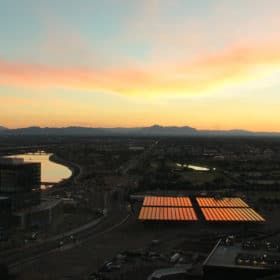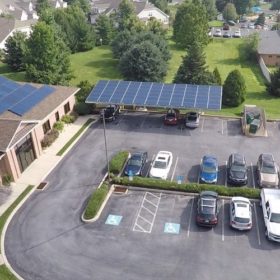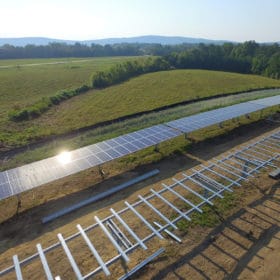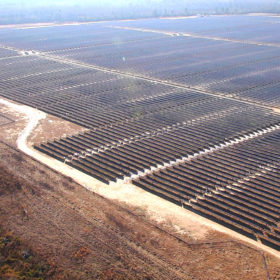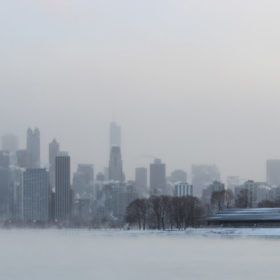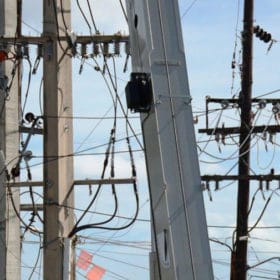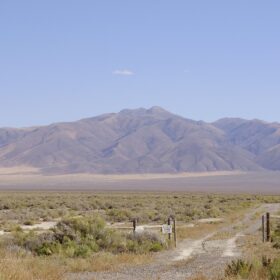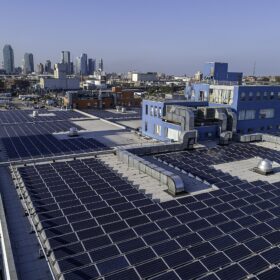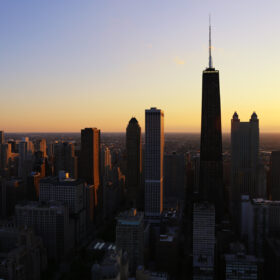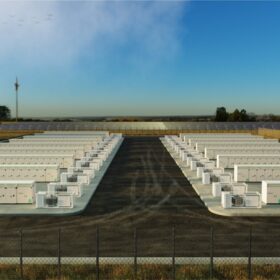Coming together to resolve tensions in capacity markets
In this op-ed for pv magazine, Dick Brooks of Reliable Energy Analytics takes a look at transmission capacity constraints, and tools grid operators can use to deal with new problems arising from the pressure on these resources.
pvMB 2/22/19: Walls are up at LG’s Alabama solar factory, utilities overspend by billions on T&D and more…
Good morning – it’s Friday! In today’s pvMB we will also bring you more regulatory capture in New Orleans, NREL’s new database for albedo, and a study that looks at the idea locations for EV chargers in Michigan.
A blockchain trading solar power system in the real world
PowerLedger’s xGrid is a blockchain-based electricity trading platform that’s now being used in a Pennsylvania business park, in addition to Chicago, California, a large housing unit in Australia, plus a few more locations.
pvMB 2/14/19: Lyft adds EV option, Kentucky legislation to kill net metering… and more!
Happy Valentines Day and welcome to your pv magazine USA morning brief! Today we’ll be looking at a Tesla Powerwall owner who’s system was so efficient in an outage, he didn’t know there was one, the limbo of Illinois solar projects, a team of teenage girl engineers that designed a solar powered tent for the homeless and everything else you need to know this morning.
pvMB 2/13/19: Tigo’s SMART website, DeKalb solar projects return… and more!
Happy hump day to you and welcome to the pv magazine USA morning brief. Today we’ll be looking at an Australian company’s drone powered by solar wings, Southern Arkansas University Tech going solar and everything else fit to get you caught up on solar news.
What will power Los Angeles’ transition to 100% renewables?
Los Angeles Mayor Eric Garcetti’s move to phase out three gas-fired power plants by 2029 is expected to accelerate the transition to 100% renewable energy by the largest municipal utility in the nation. But there are big questions about the role that local solar + storage will play.
pvMB 2/12/19: AceClamp’s response to patent infringement allegations, NEXTracker’s hiring spree… and more!
Welcome to today’s pv magazine USA morning brief and thanks for spending your morning with us. Today we’re looking at English researchers’ development of a solar flag, two community solar projects in Illinois under fire, University of Northern Iowa’s new group-buy program and everything else on our solar slate. Let’s ride!
Wood Mackenzie looks at the polar vortex and 100% renewable energy
The research and consultancy group’s study of the latest polar vortex shows the need for greater interconnection of grids and 18-40 hours of energy storage in the Upper Midwest under high renewable energy scenarios. It also shows a potential role for nuclear power; but other extreme weather events tell a different story.
Solar, wind and storage can provide seven key grid services
Solar, wind and storage can provide 7 essential grid services, which will help enable them to gain an ever-increasing share of electricity generation.
Puerto Rico plans stop short of the grid of the future
PREPA’s draft IRP calls for rapid deployment of solar and batteries, including the installation of as much battery storage as is currently online in the entire United States over the next four years, in a system broken up into “minigrids”. However, it stops short of utilizing behind-the-meter PV and storage.

